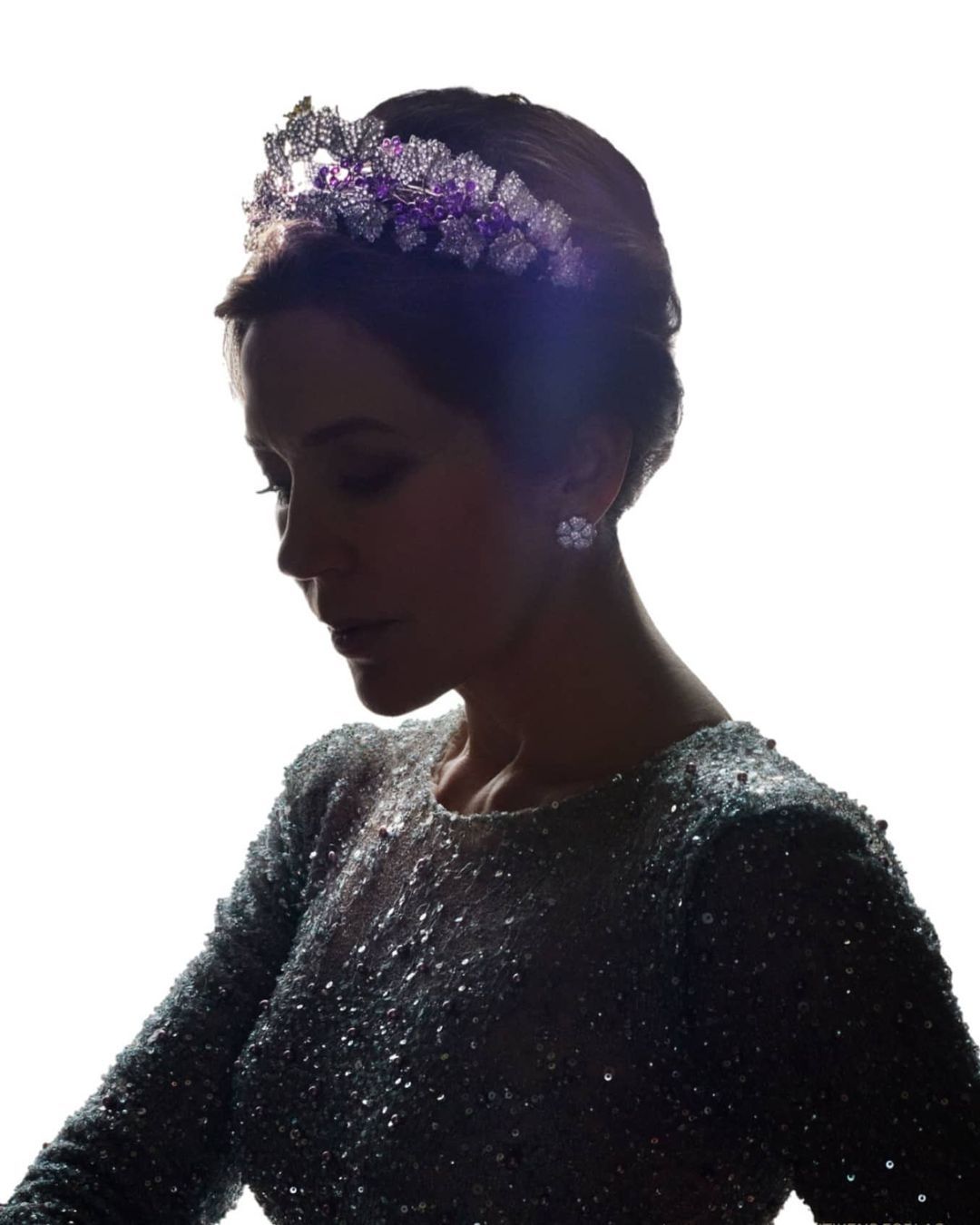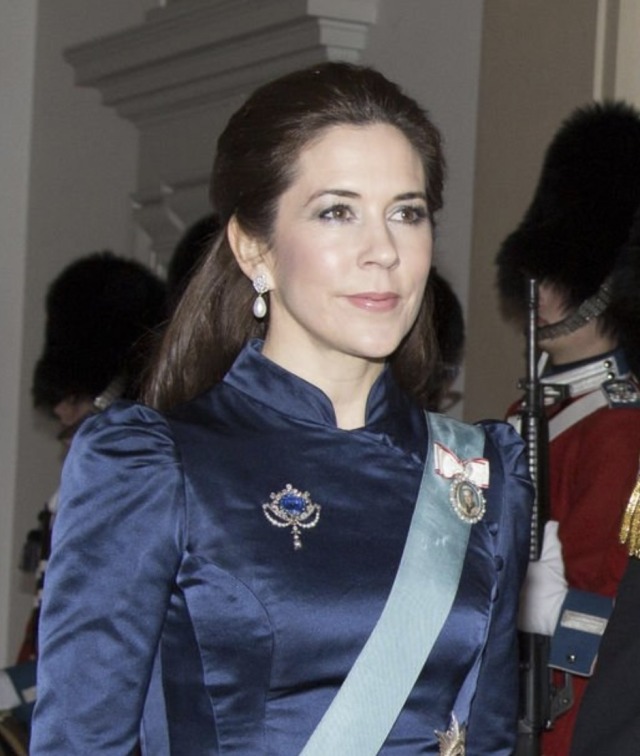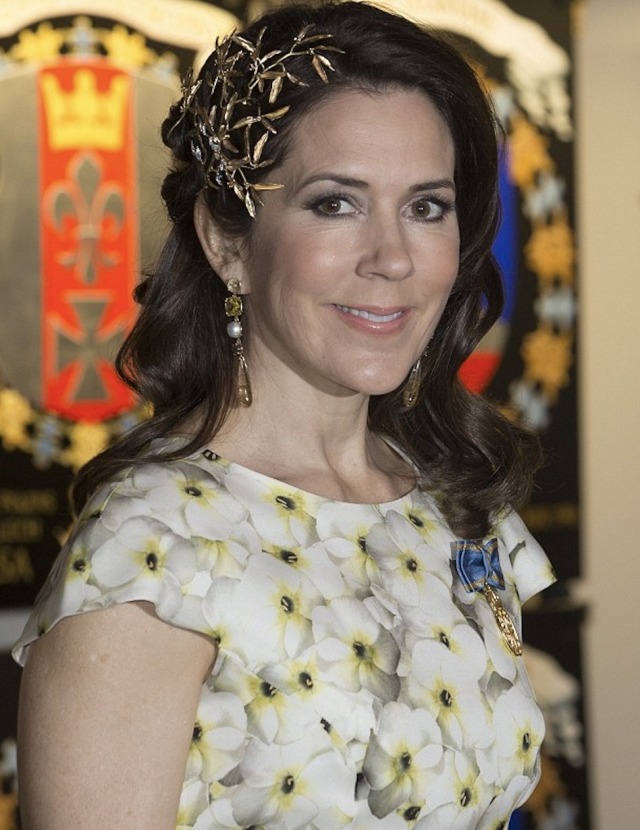There has been an exciting ’new’ Royal Tiara this week! Queen Mary of Denmark has created a magnificent Diamond Bandeau Tiara from an unused rose-cut Diamond Girdle in the Danish Crown Jewels!
Danish Emerald Parure | Danish Pearl Poiré Tiara | Danish Ruby Parure | Danish Diamond Bandeau | Floral Aigrette Tiara
Created alongside the Danish Emerald Parure, the Crown Diamond Parure, and Crown Pearl and Ruby Parure by C.M. Weisshaupt for Queen Caroline Amalie in 1840, the rose-cut Diamond Parure is composed of a large Diamond Chain and a large diamond brooch that divides into 4 smaller brooches created with Diamonds that belonged to Princess Charlotte Amalie, a sister of King Christian VI.
Weishaupt & Sons’ design of the crown jewels in the 1840s opened up various combination possibilities, which HM Queen Margrethe in particular was very creative in exploiting. Nevertheless, the mounting of the gemstones in the four sets limited the stones’ use.

This is particularly evident in the distinguished rose stone set, which consists of a heavy pendant and a long chain – a so-called Gürtel – intended to be worn around the queen’s corseted waist. This mounting was extremely modern in the 1840s and emphasized the sought-after female figure of the time with a narrowed waist and flowing skirts.

The Diamond Girdle was worn by such by Queen Lovisa around 1911 or 1912 in her State Portrait by Tuxen which hangs at Frederiksborg Castle, paired with Queen Josefina’s Diamond Tiara and the Crown Diamond Parure.
Until World War I, the rose stone set was worn around the waist, as can be seen in Laurits Tuxen’s full-length portrait of Queen Lovisa from 1911-12 at the National History Museum at Frederiksborg Castle. Here the Queen is seen with the rose stone set around her waist while the diamond necklace from the Crown Jewels, along with a number of other pieces of jewelry, sits tightly around her neck. As both dress fashion and ideals for the female body changed in the early 20th century, the rose stone set fell out of use.
After the Second World War, Queen Ingrid wore the Diamond Girdle as a Necklace on a couple of occasions with the Danish Emerald Parure, while Queen Margrethe only wore the Diamond Corsage, for her 50th Birthday in 1990 and the Norwegian State Visit in 1991.
Queen Alexandrine did not use the set, as far as is known. Queen Margrethe has only worn the pendant on two occasions during her reign, both times as a corsage (brooch).

Contrary to the intention that Dowager Queen Sophie Magdalene had for her jewel collection upon her inheritance – namely to shine a light on the royal house – the rose stone set has lived a shadowy existence in the treasury display case under Rosenborg Castle for almost 100 years.
Earlier this week, our friend Kaspar informed us that the Diamond Girdle of the Danish Crown Jewels has been temporarily removed from it’s permanent display at Rosenborg Castle, and joked that Queen Mary may be turning it into a Bandeau Tiara like that in the Dutch Royal Collection, but we never imagined that our wild theory would be confirmed the following day.



Now, in 2024, Queen Mary has had a portion of the rose-cut Diamond Rivière from the Danish Crown Jewels set onto a Tiara frame.
The Queen, in collaboration with the Royal Collection, has now wanted to change this contradiction out of respect for history and the distinguished jeweler’s work that was displayed in the 1840s when designing the rose stone set. By creating a new supplementary mounting frame for the set, it will now be possible to wear the largest diamonds of the rose stone set in a tiara.
With the creation of the new frame, the Queen and the Royal Collection are summarizing the old tradition of adapting the crown jewels to the demands and needs of the time. In many ways, this is paving a new path for the Danish crown jewels, uniting the different traditions that have surrounded these four iconic jewelry sets – a path between revitalization and continuity.


With this approach, the rose stone set gets a new use, which will pull the set out of the shadowy existence and onto the big stage at royal events, as the stones were originally intended.
In a new design, which with its simple expression points towards modern design and adds a contemporaneity in 2024, and which is at the same time anchored in history, as the original silver coverings and mountings have been preserved. This will make it possible to wear the rose stones in both the unchanged belt and in the new diadem.




The mounting of the stones on the Diamond Bandeau is similar to the Dutch Diamond Bandeau, which has erroneously called the ‘rose-cut Diamond Bandeau’ for years. Queen Máxima has worn the Diamond Bandeau on her last few visits to Denmark, and it no doubt served as an inspiration to Queen Mary.



With the Rose Stone Tiara, the Danish Crown Jewels will have another tiara that can be worn with the diamond set or in combination with the Royal House’s historical jewelery in the Royal Treasury. The new tiara is designed as a so-called Bandeau – a headband for mounting in the hair consisting of a single row of rose stone-cut diamonds. This simple shape continues the expression of the belt, where the diamonds are also mounted in a row.
Since the historic settings from the 1840s are retained in the new tiara, the back of the diamonds will remain closed, meaning that the diamonds will not be visible through, as is normal in tiaras. This will make them appear less brilliant than if they had been seen in open settings.


Contributing to the special expression of the new tiara are not only the historic settings, but also the historic cut of the diamonds. Rose stone cutting is characterized by a flat base and 24 facets, whereby the stones do not reflect light in the same way as the more advanced brilliant cut with 58 facets, which, among other things, characterizes the diamond sets of the crown jewels.
The frame on which the rose stones in the new tiara are mounted was created by goldsmith Matias Hasbo Dinesen in consultation with the Queen and the Royal Collection.





Just a few days after the new Tiara was announced, Queen Mary wore it in public for the first time at the State Banquet during the Egyptian State Visit to Denmark this week, paired with her Diamond Earrings and the Brooch of the Antique Diamond Parure. There is no doubt the Diamond Bandeau will now be worn for years to come!

With the rose stone tiara, HM The Queen and the Royal Collection are reliving a centuries-old tradition of reshaping the Danish crown jewels according to the changing needs of the times, while at the same time bringing the rose stone set, which is rarely used today, back to life. All this in respect of the heritage and tradition that the Danish crown jewels, as living cultural heritage, uniquely represent.
Danish Emerald Parure | Danish Pearl Poiré Tiara | Danish Ruby Parure | Danish Diamond Bandeau | Floral Aigrette Tiara

The Jewels of the Queens of Denmark
The Danish Emerald Parure
The Danish Pearl Poiré Tiara
The Danish Ruby Parure
Danish Diamond Bandeau
Wedding Tiara
Diamond Necklace Tiara
Midnight Tiara

Antique Diamond Parure
‘Belle Epoque’ Diamond Earrings
Wedding Earrings

Diamond Fringe Earrings

Aquamarine Jewels
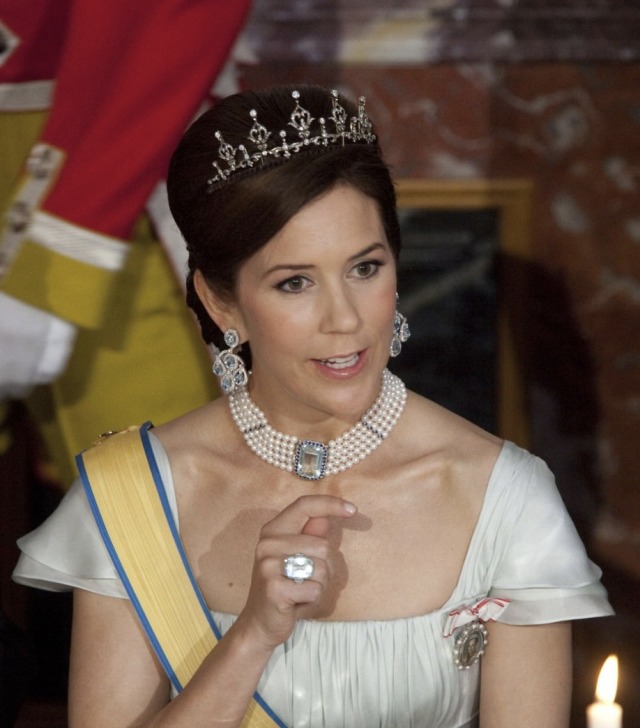
Amethyst Earrings
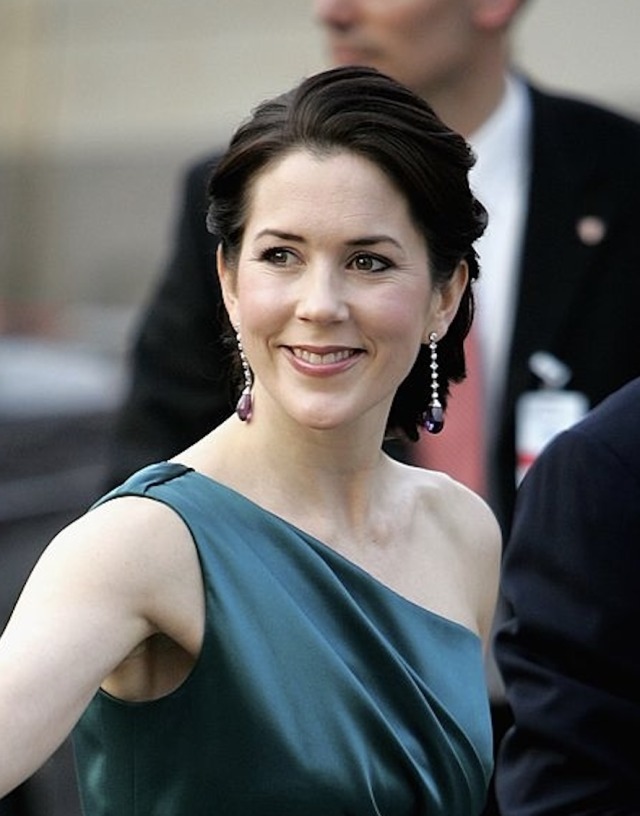
Connaught Sapphire Brooch
Diamond Flower Brooch
Antique Turquoise Parure
Diamond Flower Earrings
